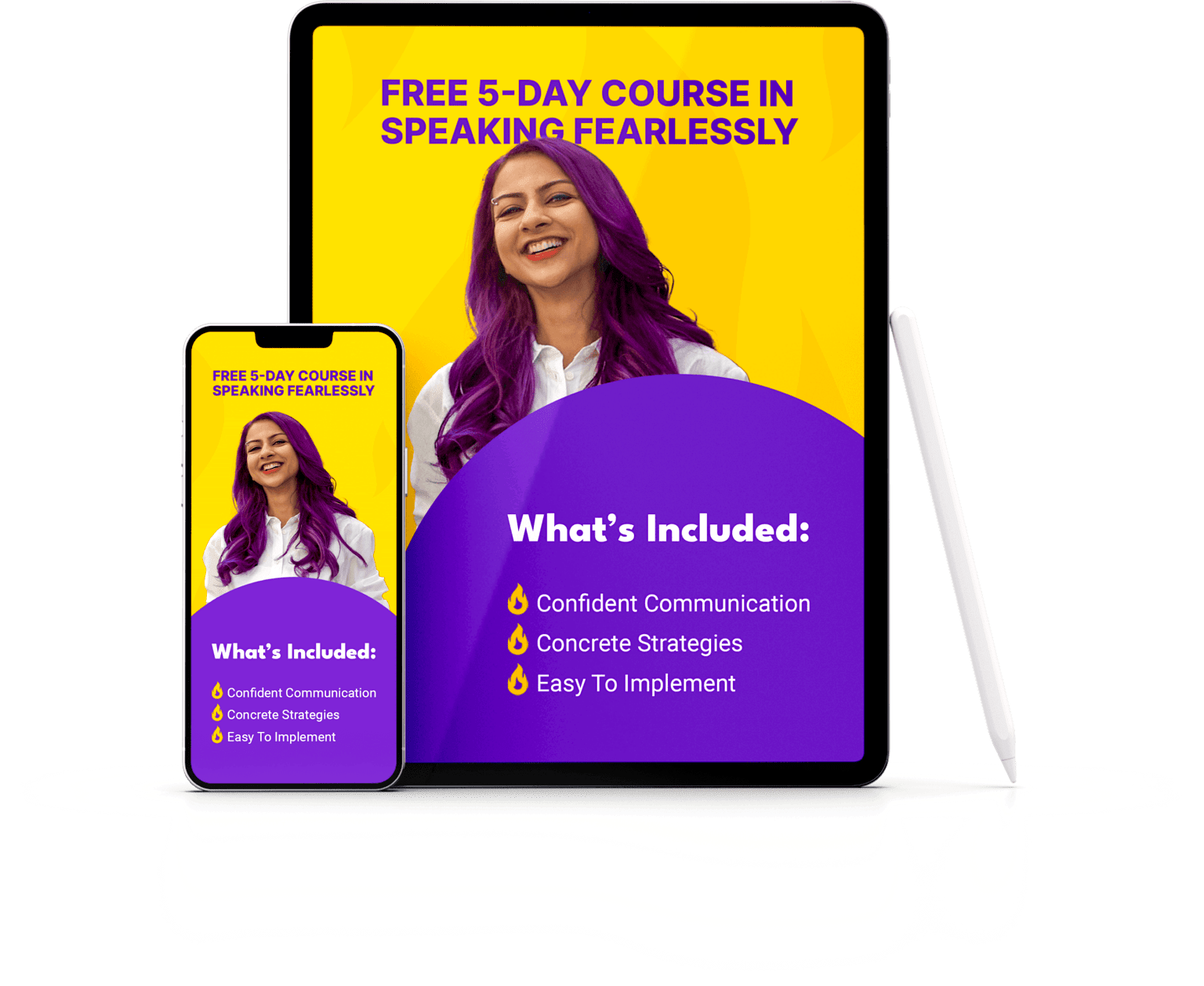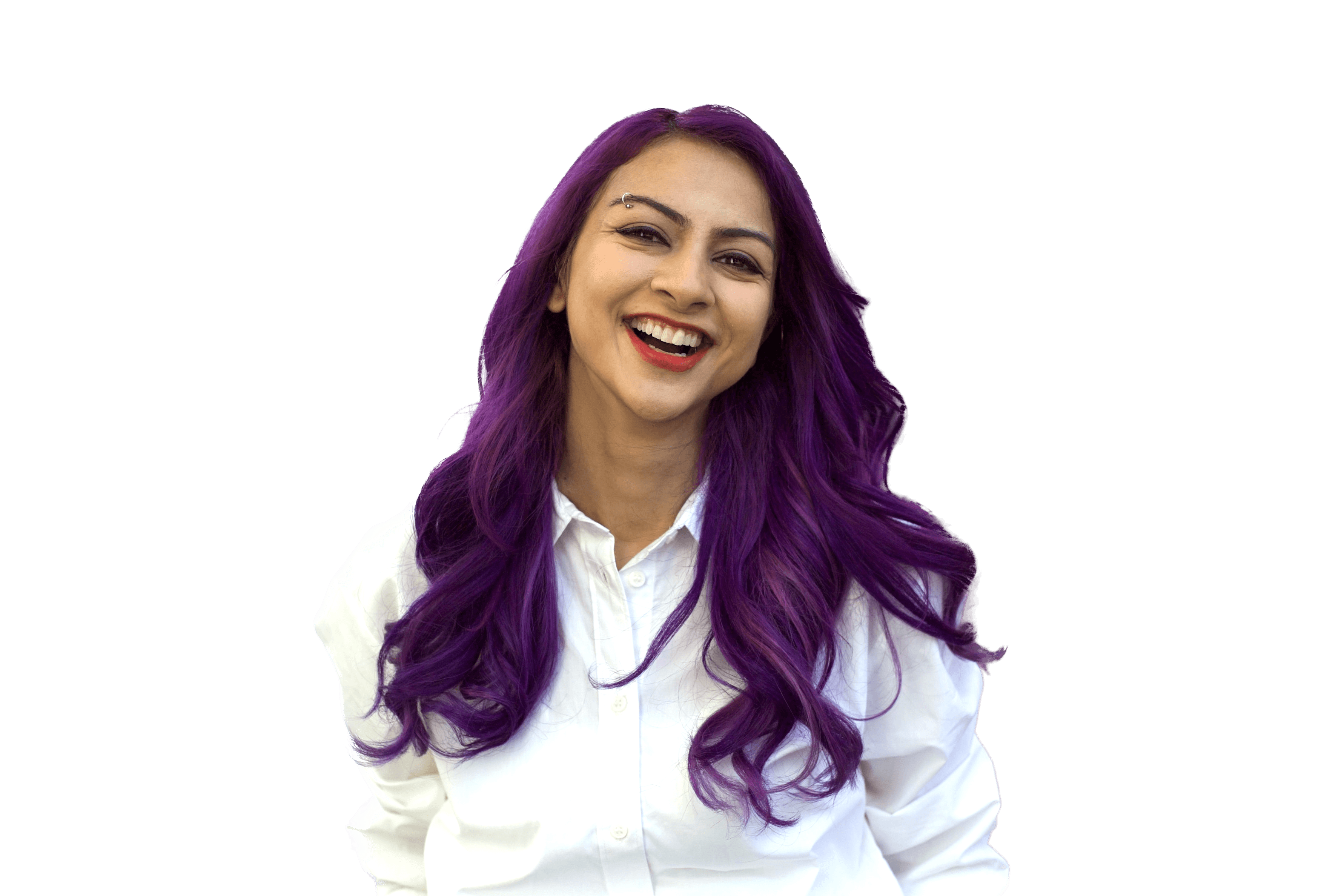Remember the presentation you were so excited to attend, only to feel distracted because of the “ums”, “uhs” and “likes” the presenter used?
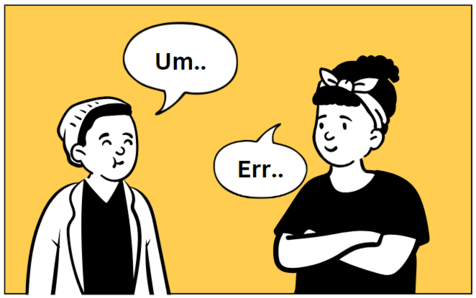
They’re called “filler words” and the truth is – most of us use them. You too could be using them in your talks and presentations, knowingly or otherwise.
However, when you’re on a podcast or delivering a presentation, every word counts. Filler words are like speed bumps – they disrupt your delivery and don’t let your audience immerse themselves in the experience. They might seem harmless, but they can interrupt the flow, dilute your message and even make you sound unsure of yourself – undermining your authority.
In a study conducted by research professor Dr Frederick Conrad, he found that as people used more filler words in their conversations, they lost credibility for the audience.
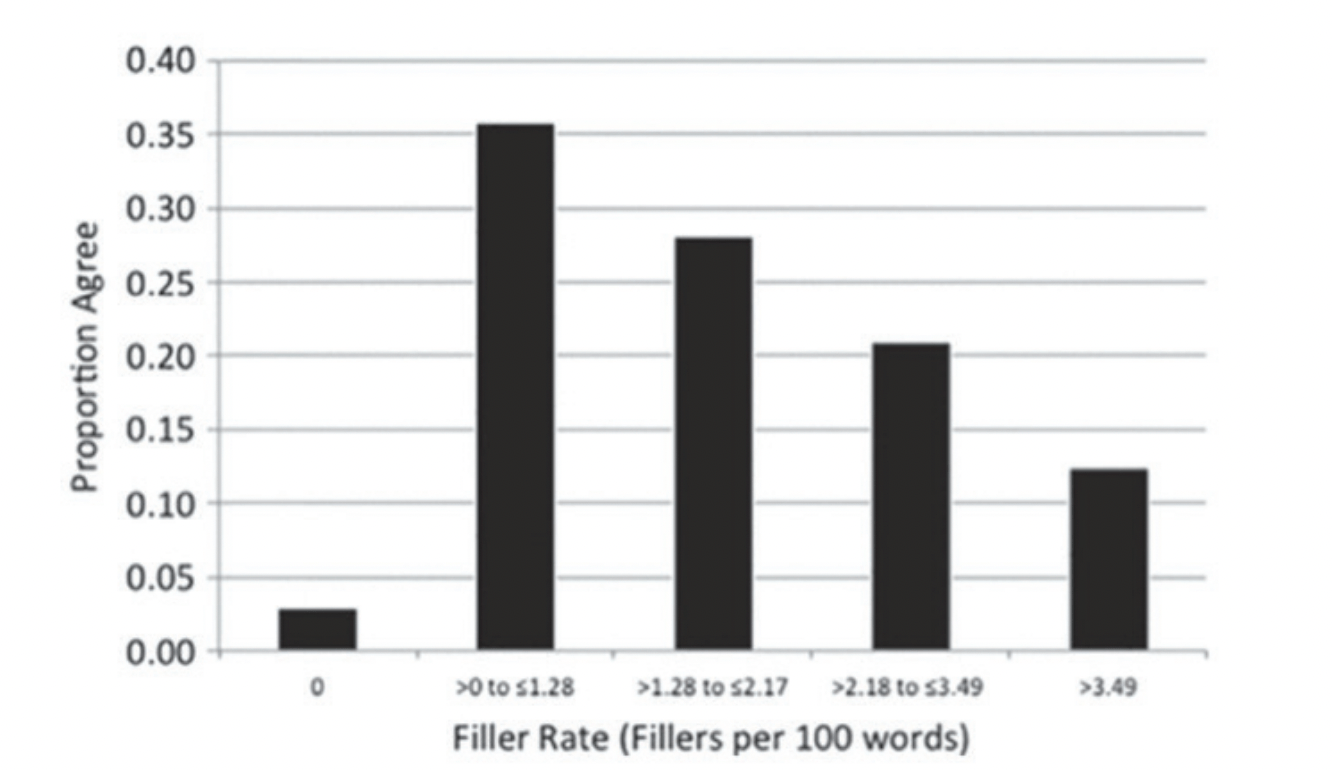
Credit: Image by Brigham Young University
Here’s an example to show you how using filler words can affect your credibility, coherence and authority:
Imagine you’re at a conference and the speaker is explaining the concept of “disruptive innovation”. The speaker peppers their explanation with filler words:
“So, you know, disruptive innovation, um, it’s kind of like, uh, when a new company comes in, err, out of nowhere, and, you know, shakes up an entire industry, like, completely changes the game, basically.”
Without using filler words, the speaker could have said: “Disruptive innovation is when a new company arrives out of nowhere and shakes up the entire industry. It’s changing the game”.
Notice the difference here? When the expert expresses their thoughts without filler words, they come across as a confident authority on the subject.
In this article I’m going to share with you the EXACT steps you can use to get rid of filler words when you speak so you always exude confidence.
What’s Inside:
What are filler words?
These are words that you use out of habit while you’re coming up with the next thing to say. They have no significance – and can often distract from the key message. There are 3 types of filler words:
- Nonsensical sounds like “uhh”, “ummm”, “errr”, “eyyy”.
- Words like “like”, “so”, “anyway”.
- Pet phrases like “you know”, “if that makes sense”.
An interesting fourth type of filler word is “and”. I’ve seen a lot of speakers use “and” when they could have put a full-stop and then started a new thought. An excessive use of “and” to connect disparate thoughts often results in complex sentences.
Why do we use filler words?

Credit: Image by Giphy
Based on research by linguistic professors at the Psychological Laboratory Utrecht University, Oomen and Postma, here are a few reasons why you could be using filler words:
- When you’re not confident: You’re feeling nervous or need some more time to come up with the next thing to say.
- When you get distracted: It could be bright lights, someone’s phone ringing in the audience or a disturbance with the mic.
- When you’re searching for an appropriate word: You’re fishing for that perfect word to describe a thought, and your brain needs an extra second to come up with it but your mouth continues talking.
- As a placeholder to let people know you’re not done explaining: This can happen when you’re in a meeting and you aren’t done talking. As you gather your thoughts, you want to ensure that others don’t interrupt.
- When your thoughts aren’t coherent: This can happen when you’re talking about an abstract topic.
When you’re on stage or addressing an online audience, you want to influence people with your knowledge and expertise. Filler words rob you of that opportunity to influence your audience.
Here is an 8-step process I share with my coaching clients to help them identify and eliminate filler words when they speak. Practicing this can help you say goodbye to filler words forever.
Step 1: Become a more mindful speaker
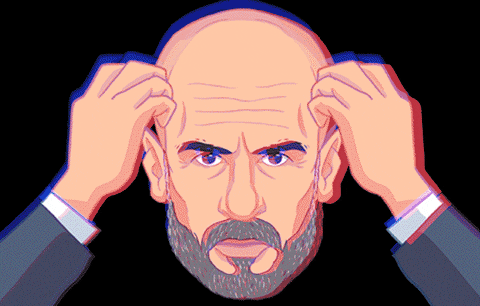
Mindful speaking is about consciously choosing your words and delivering them with intention. You can practice mindful speaking by doing two key things:
1. Focusing on your message.
Before you speak, take a moment to gather your thoughts. What’s your main point? How can you express it clearly and concisely?
Having a clear focus matters because it lets you avoid rambling or being at a loss for what to say next.
2. Being present in the moment.
This helps you curb nervousness or external distractions that disrupt your focus. You’ll be able to pay attention to your own voice and the reactions of your audience.
Feel the stage beneath your feet (or imagine a familiar audience behind the camera), hear your voice and be truly present.
With practice, mindful speaking becomes second nature. You’ll notice yourself using fewer filler words, expressing your ideas confidently and connecting with your audience meaningfully.
Step 2: Identify your filler words

Credit: Image by Giphy
It’s time to identify when you’re using filler words and which specific ones you’re using.
An easy way to do this is to record yourself speaking and watch it back. Start identifying where you’re using filler words:
- Was it because you needed an extra second to think?
- Were you unsure of what comes next?
- Did you get distracted?
Become aware of the exact filler words you’re likely to use – whether it’s “um” and “uh” or more coherent words like “like”, “so” and even the devious “and”.
Step 3: Catch yourself using filler words
Now you can start becoming aware of your filler words and catch yourself “in the moment” whenever you’re tempted to use them.
You can train your brain to spot them by being more present and mindful when you speak, paying particular attention to transitions. Train your ears to recognize the sounds of common filler words like “um,” “like” or “err”.
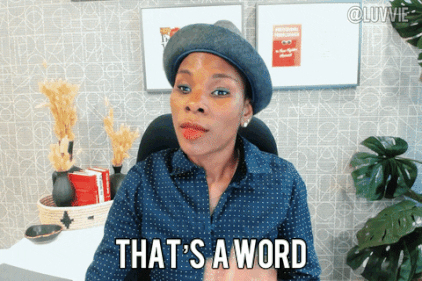
Credit: Image by Giphy
If you find it difficult to be mindful of your filler words in the moment, try this exercise suggested by Carol A Fleming in her book, It’s The Way You Say It:
“Practice your speech with a friend who will immediately drop a marble in a tin can every time he hears the filler. Yes, this will drive you nuts, and yes, it will quickly make you aware when you do it again.”
This will help you start catching yourself before you’re tempted to use a filler word.
Step 4: Pause before you say the filler word
Now it’s time to replace filler words with pauses. Whenever you catch yourself about to use a filler word, PAUSE.

Credit: Image by Giphy
For example, if you’re giving a presentation on sustainable fashion, here’s how pausing works instead of using filler words:
With filler words: “So, um, once we have these awesome new fabrics, like, you know, people will basically start, uh, buying them more, right?”
With pauses: “(pause) Once we have these awesome new fabrics (pause) ready for consumers (pause) they will start seeking them out.”
Did you notice how you used the pause to create a natural “bridge” between different ideas? Also note how I recommend that you start your sentences with a pause so that you can gather your thoughts instead of jumping in.
When you use a pause to stop yourself from using a filler word:
- You give your brain a moment to process your thoughts and choose the ones you want to express.
- You allow yourself to state your point clearly and authoritatively.
- Your coherent thoughts help your audience understand you easily.
The result: a more engaging and memorable presentation.
Initially, this may not be easy because you’re adding a cognitive burden to your brain. You’re giving it additional work to do – to become aware of and eliminate filler words on top of articulating your thoughts. However, when you power through this discomfort and keep using the “catch and pause” strategy, you’ll start eliminating filler words from your natural speech patterns.
Step 5: Use simpler language
When we’re presenting a complex thought, it’s tempting to reach for fancy vocabulary and complicated sentence structures. That’s when we tend to take refuge in filler words. However, simplicity can be the most powerful tool in our communication arsenal to fight filler words.

Credit: Image by Giphy
Imagine explaining a new business idea to a group of investors: using cactus starch to create a substitute for leather. They wouldn’t need to know the complex chemistry-related jargon, but they need to get an idea of how it works. You can break it down and choose simple words and sentences that anyone can understand.
As you begin to speak using simple words, the right thoughts and words will naturally flow and you will notice yourself using a lot fewer filler words.
Step 6: Slow down your fast pace

Credit: Image by Giphy
When you speak too fast, your audience feels like they’re drinking from a fire hose – information rushes past, overwhelming their senses. When you slow down your pace, you give yourself more time to process your thoughts and you give the audience more time to listen. Win-win.
Step 7: Prepare well
Picture this: you’re presenting to an attentive audience with confidence and ease. Your thoughts flow seamlessly and the right words slide off your tongue effortlessly. This is the benefit of being well-prepared.

Credit: Image by Giphy
I’ve seen my clients often use filler words when they haven’t practiced their presentation enough. They’re not confident of what comes next – and they aren’t sure of what they want to say.
However, when clients invest time in rehearsing their delivery and anticipating potential questions, they start delivering with more coherence and clarity. The frantic search for words is replaced by fluidity in delivery and their “ums” and “uhs” simply vanish.
Step 8: Stay relaxed in the spotlight
Stepping onto a stage or looking into a camera lens can be nerve-wracking. But here’s the secret: Learn to relax and it can become your superpower.
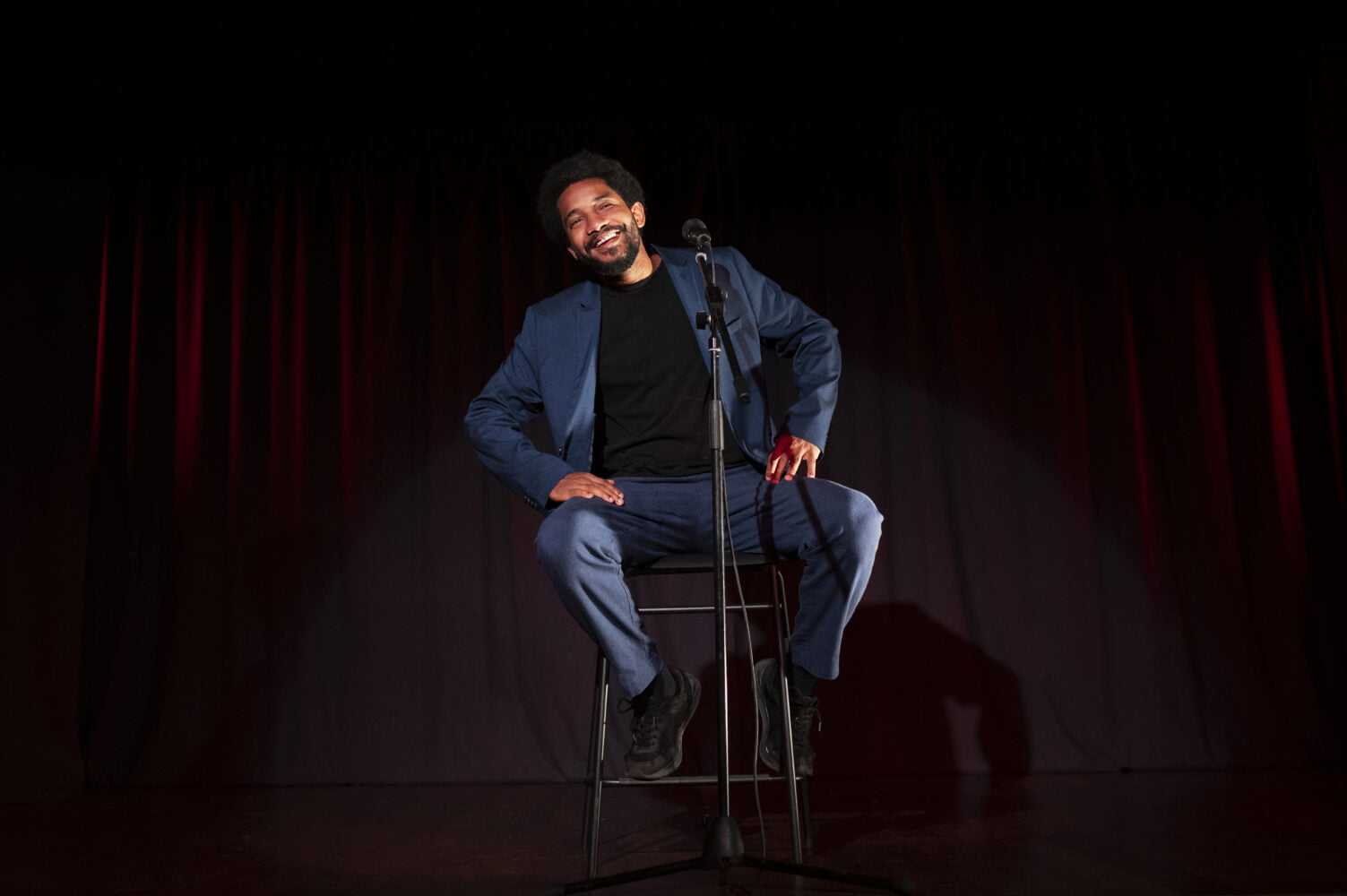
Credit: Image by Freepik
Here are a few techniques to get you to relax under the pressure of the spotlight:
- Picture success during practice: Visualize yourself speaking with ease, connecting with your audience and smiling confidently; believe in your own calm.
- Prepare by taking deep breaths: Before every presentation, talk or podcast appearance, inhale deeply and exhale slowly to let the tension melt away with each breath.
- Reframe your nerves as excitement: You’re not nervous – you’re excited for the opportunity to speak and potentially create an impact.
Relaxation isn’t about pretending that your nerves don’t exist. It’s about acknowledging them and then telling yourself, “It’s okay, I’ve got this.” When you embrace this inner calm, your thoughts will flow freely, you’ll automatically reduce filler words and your audience will see your authentic self.
Bonus: How to stop using weak words
Weak words are those that lack punch and precision, often diluting the impact of your message and making you sound less confident and articulate.
Consider these examples:
- “Our Q3 numbers are possibly looking positive.”
- “The client wanted me to sort of rephrase the proposal.”
- “That’s how you do it, if that makes sense.”
- “Basically, what we need is a more efficient process.”
- “The sales figures are pretty good this quarter.”
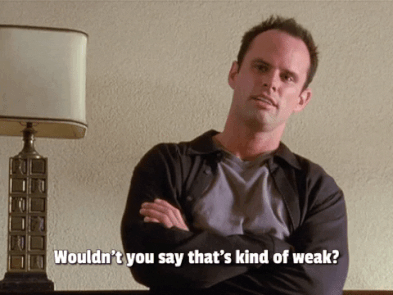
Credit: Image by Giphy
Weak words can include:
- Hedge words: These are words like “maybe”, “possibly”, “kind of”, “sort of” etc. These words weaken certainty in your message and create doubt in your audience’s mind.
- Excessive qualifiers: These are words like “very”, “really”, “quite”, “pretty” etc. Avoid these as they can downplay your message.
- Redundant adverbs: A few examples of redundant adverbs are “actually”, “basically” and “frankly.” These can interrupt the flow of your delivery and add unnecessary emphasis.
- Hesitation indicators: Some of these can be “I think”, “I guess”, “maybe” etc. These words make your argument sound tentative. Replace them with “I know”, “it’s clear” and “certainly.”
- Permission seekers: Consider these examples: “I was wondering”, “do you think”, “could you” etc. These sound like you’re requesting permission. Instead, use “Let me propose”, “here’s an idea” and “Consider this”.
- Authority weakeners: “If you know what I mean”, “if that makes sense” – these phrases make you sound like you’re not sure of yourself. Replace them with “Any questions?” and “what do you think?”
Weak words cloud your ideas and make you sound hesitant. Remember, “strong” words don’t have to be fancy. Using clear, direct and simple language gives clarity and increases the impact of your message.
Conclusion
Nervous stumbles due to distracting “ums” and “errs” – the dreaded filler words – can sabotage even the best presentation or talk. I hope you found the 8-step process that I shared here helpful to eliminate filler words from your presentations, talks and meetings.
The best way to get results is to use this strategy every single day – even for a casual conversation at the office or with a client. The more you practice this process, the sooner you’ll see filler words disappear from your vocabulary forever.
I hope you’ll emerge as a confident public speaker in 2024. Should you need any help, reach me here. Good luck!

